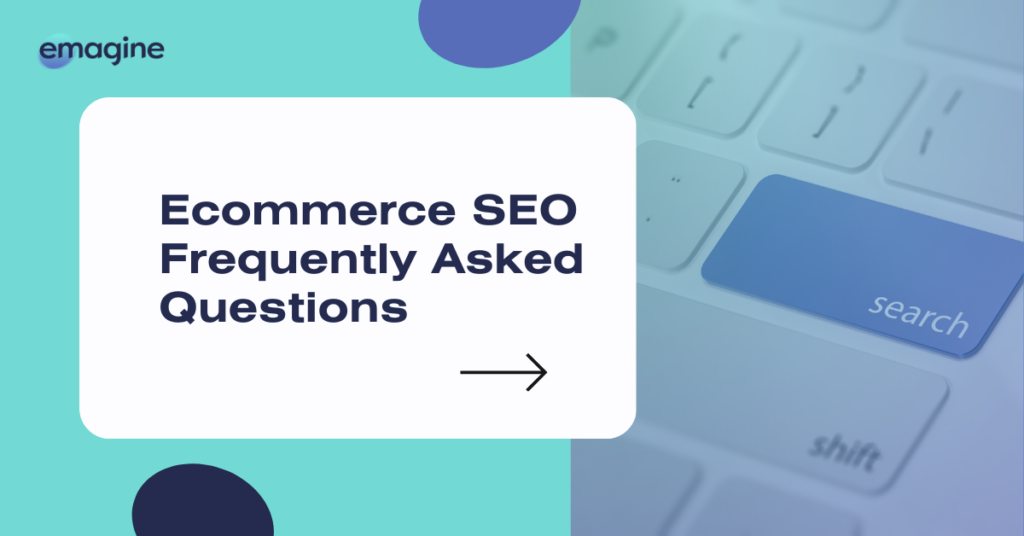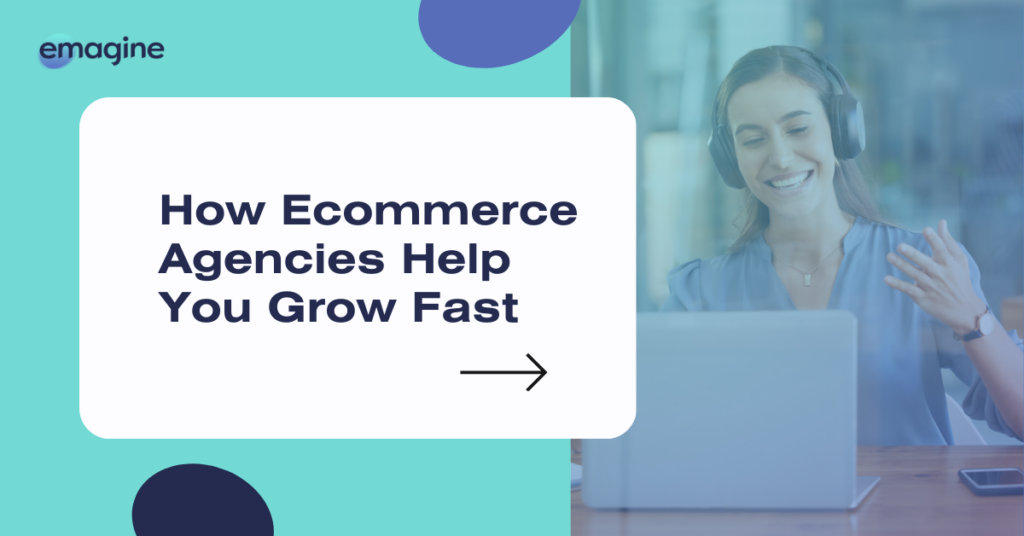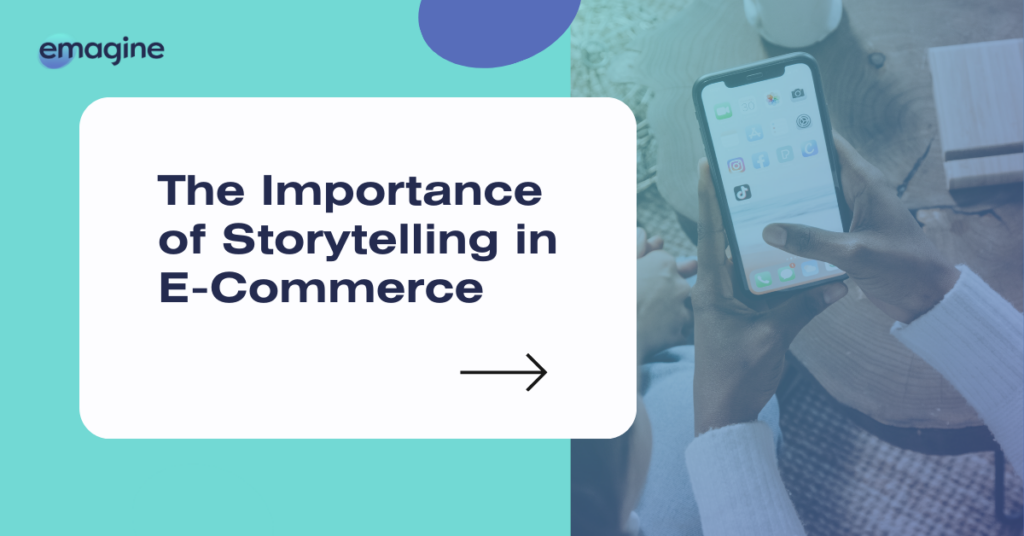In the rapidly evolving worlds of business and digital marketing, shifting from a traditional brick-and-mortar model to a dynamic e-commerce platform is no longer an innovative choice but a necessity to start selling online and ensure survival and growth.
This transition can be daunting, especially for entrepreneurs and small businesses accustomed to the tangible world of physical stores. However, with the right strategy and guidance, this transformation can open doors to an expansive digital market, bringing numerous opportunities and rewards.
This blog post will guide you through ten essential steps to successfully transition your physical store into a thriving online business. Whether you’re a seasoned entrepreneur or a small business owner, these tips will help you navigate the e-commerce landscape with confidence and ease.
Step 1. Understand Why Ecommerce Matters
E-commerce has revolutionized business operations by offering numerous benefits. It enables your business to operate 24/7, expand sales opportunities, and reach a wider customer base. It also allows you to go global, breaking geographical boundaries. With personalized shopping experiences and ease of shopping, e-commerce has become integral to the modern business landscape.
Here are some compelling reasons to start selling online:
- Broader Market Access – You are not limited by geography. Your online store can be accessed by customers around the globe, thereby massively increasing your potential customer base.
- Cost-effective – Running an online store can reduce overhead costs such as rent and utilities. It also allows you to automate various functions of your business, making it more efficient.
- 24/7 Availability – Your e-commerce store is always open. This allows customers to shop at their convenience, not just during regular business hours.
- Data Collection – E-commerce platforms allow you to gather valuable customer data, which can be used to refine marketing strategies and enhance customer experience.
- Personalized Shopping Experience – With e-commerce, you can provide a highly personalized shopping experience to your customers. Personalized recommendations, wish lists, and customer profiles enhance customer engagement and increase sales.
By understanding the importance of e-commerce and leveraging its advantages, you can generate increased sales and stay competitive in today’s digital age.
Step 2. Evaluate Your Current Inventory & Plan The Product Catalog You Want To Start Selling Online
As you transition to an e-commerce platform, taking stock of your current inventory and planning your product offering is crucial. This process enables you to identify your best-selling products, the items suitable for online sales, and opportunities to introduce new products tailored for the online market.
Below are some steps on how you can effectively identify products that will appeal to your online customers:
- Analyze Offline Store Sales – Analyze sales data from your physical store to identify top-selling products and those with consistent sales. This information will help you understand what your existing customers love about your product range.
- Conduct Online Research – Investigate online platforms selling similar products. Look at product descriptions, customer reviews, and ratings. This will give you insights into what customers value and any gaps in the market that your products can fill.
- Use Digital Tools – Google Trends and Keywords Search Tools are powerful tools that show you how often some terms are searched online across various markets. By leveraging these tools, you can understand the demand for certain products, the seasonality of the trend, and the general interest over time.
By following these steps, you can develop a strong product offering that meets online customer needs while aligning with your business objectives.
Step 3. Optimize Your Product Presentation
In the world of e-commerce, the presentation of your products online can make or break a sale and can significantly impact the customer’s purchase decision. Unlike a physical store, customers can’t touch or feel your products online.
Here are some tips to help you create an engaging digital product presentation:
- Professional Product Photos – High-quality, clear, and professional photos of your products are essential. Ensure you have multiple images showing your product from different angles and in various scenarios. This helps customers get a better understanding of what they’re purchasing.
- Engaging Product Videos – Videos can demonstrate how to use your product or show it in action, providing potential customers with valuable insights.
- Descriptive Product Titles & Descriptions – Your product title should be clear and concise, while your product description should detail the features, benefits, and specifications of your product. Use a persuasive and engaging tone to highlight why your product is a must-have.
- User Manuals & FAQs – Provide manuals and FAQs for your products. This can help clear any uncertainties or questions customers may have and demonstrate that you stand behind your products.
- Product Reviews – Encourage your customers to leave reviews of your products. Prospective buyers often read reviews before purchasing, and positive reviews can significantly influence their decision.
- Tags, Categories, & Collections – Organize your products into categories and collections, and use tags effectively. This makes it easier for customers to navigate your site and find the products they’re interested in.
By prioritizing the presentation of your digital product, you will enhance the customer’s shopping journey and positively influence their purchase decisions.
For additional insights on capturing high-quality photos and crafting compelling product descriptions, visit our blog post about the Top 10 Missteps Ecommerce Entrepreneurs Make And How To Avoid Them.
Step 4. Choose the Right Ecommerce Platform to Start Selling Online
The platform you choose serves as your online store’s backbone, so it’s essential to invest time in researching and selecting the one that best fits your needs.
Here’s what to consider when picking an e-commerce platform:
- Understand Your Business Needs – Your business model and what you’re selling largely determine which platform will work best for you. For example, a store selling handmade crafts may have different needs than a business selling digital products. Define your needs clearly before deciding on a platform.
- Check Out the Features – Look for features like the ability to create and manage product listings, process orders, secure payment gateways, SEO functionality, mobile compatibility, and integration with other tools (like email marketing software, social media platforms, etc.). These will be critical for running your online store efficiently.
- Consider the Costs – Most e-commerce platforms have monthly or annual fees, and some charge extra for additional features or a higher volume of sales. Ensure you understand all the costs and that they fit within your budget.
- Test the Ease-of-Use – The platform should be user-friendly, with an intuitive interface that makes it easy for you to manage your store. If it’s too complicated, it can become a headache rather quickly.
- Check Customer Support – Good customer service is vital. Look for platforms that offer 24/7 support through multiple channels. This will ensure that any issues that arise can be quickly resolved.
- Ensure Scalability – As your business grows, your e-commerce needs will change. Choose a platform that can scale with you and adapt to your evolving needs.
Remember, the right platform for you is the one that meets your needs, and budget, and is easy to use and scale with your business.
Step 5. Think About Logistics
When transitioning from a brick-and-mortar store to an online presence, having effective logistics becomes crucial. This entails optimizing inventory management, streamlining order fulfillment processes, and ensuring seamless delivery to customers. By focusing on these aspects, you can ensure a smooth and efficient transition, providing a positive experience for their online customers.
Below are the key logistics considerations for transitioning to an e-commerce store:
- Inventory Management and Order Fulfillment – There are several options available for managing your inventory and fulfilling orders. In-house management provides more control but requires more internal resources. Drop shipping requires less investment but offers less control. Third-party logistics companies offer high-level service and cost-effectiveness although they may be expensive for small businesses.
- Shipping – Explore various shipping options and rates. You can provide free shipping, flat-rate shipping, or real-time carrier rates. While free shipping is a great incentive, ensure it doesn’t impact your profits. Flat rates and real-time carrier rates are transparent alternatives where customers pay a fixed amount or the exact shipping cost, respectively.
- Returns and Exchanges – Having a clear and fair returns and exchanges policy is crucial in e-commerce. It enhances customer trust and satisfaction, encouraging them to shop with you again. Ensure that you communicate your policy to your customers and make the process as easy as possible for them.
Remember, the key to successful logistics in e-commerce is to maintain a balance between cost-effectiveness and customer satisfaction. It’s crucial to choose options that will not only keep your costs down but also provide a positive shopping experience for your customers.
Step 6. Set Up Secure Payment Gateways
Establishing secure payment gateways is a crucial step to start selling online. This not only ensures safe and smooth transactions but also builds trust with your customers.
Below are the key considerations when setting up secure payment gateways for your online business:
- Prioritize Cybersecurity – Online shoppers are cautious about cyber threats. Secure your online store to build trust and encourage purchases. Use SSL certificates to encrypt data and protect customer information.
- Choose Reliable Payment Gateways – Secure payment gateways like PayPal, Stripe, and Square offer built-in security features like data encryption and tokenization to protect sensitive cardholder information during transactions. When selecting a gateway, consider factors such as transaction fees, accepted payment methods, and integration with your e-commerce platform.
- Ensure PCI Compliance – Payment Card Industry (PCI) standards are regulations set by credit card companies to secure credit and debit card transactions against data theft. Complying with these standards is not just important for protecting your customers but is also legally required for businesses that process card payments.
- Offer Multiple Payment Options – Providing a variety of payment options can help improve the customer experience. Besides credit and debit cards, consider offering other payment methods such as digital wallets, bank transfers, and cash on delivery.
- Support Different Currencies and Languages – If your business has an international reach, it’s important to support different languages and currencies. This feature allows international customers to shop in their local currency and language, providing them with a more personalized and convenient shopping experience.
Setting up secure payment gateways is a significant investment in your e-commerce store’s success and your customers’ trust. It provides a secure, smooth, and convenient shopping experience, positioning your online store for success in the highly competitive e-commerce landscape.
It’s worth noting that Shopify, the leading all-in-one e-commerce platform, offers all the above-mentioned features out of the box. You can give it a try with their free trial or you can contact us for a personalized consultation.
Step 7. Sort Your Online Business Legalities
To start selling online, you should also ensure all business legalities are sorted. This is critical to maintain transparency, build trust with your customers, and stay compliant with the law.
Here are the key legalities you need to take into account:
- Terms and Conditions – This document sets the rules for using your website and clarifies your policies on important issues like returns, refunds, and disputes. A well-drafted terms and conditions page can help protect your online store from legal disputes.
- Privacy Policy, Cookies Policy, and GDPR Compliance – Having a comprehensive privacy policy is crucial. It should clearly outline the user data you collect, its use, and the measures taken to safeguard it. A cookies policy is also necessary to inform users about the type and purpose of cookies used on your e-commerce platform. GDPR compliance is non-negotiable for EU customers. It involves securing explicit consent before collecting user data and providing them with rights to access, rectify, or erase their data. These measures build trust and transparency and fulfill legal obligations.
- Business Licenses, Permits, and Value-Added Tax (VAT) – Understanding the legal requirements for your online store is crucial. Depending on your location and what you sell, you may need licenses and permits. Obtaining the necessary permissions enhances credibility and ensures compliance with the law. Familiarize yourself with VAT laws applicable to your e-commerce business as they vary by country. Complying with these laws is essential for legality, pricing, and profitability. Incorporate VAT considerations into your pricing strategy.
Ensure these legalities are addressed appropriately and the respective information is communicated on your website. This will boost your customers’ confidence in your brand and help you avoid legal issues down the road.
Step 8. Plan Your Digital Marketing Strategy
A well-executed digital marketing strategy is integral to the success of your e-commerce business. It not only helps drive traffic to your website, but it also increases brand awareness, drives customer engagement, and eventually, helps you start selling online for real.
Here are the top considerations when planning your digital marketing strategy:
- SEO Optimization – Optimize your e-commerce store for search engines to increase your visibility. Research relevant keywords, optimize your product descriptions, titles, and images, and include meta tags and meta descriptions to improve your ranking on search engine result pages.
- Email Marketing – Build your subscriber list and regularly send out newsletters and promotional emails. Email marketing is a cost-effective way to keep your customers informed about new products, sales, and other news.
- Social Media Marketing – Utilize platforms like Facebook, Instagram, TikTok, X, and LinkedIn to reach your target audience. Regularly post engaging content, interact with your followers, and consider paid advertising to boost your reach.
- Content Marketing – Regularly publish blog posts, guides, and other valuable content on your website to attract and engage customers. Quality content can help establish your brand as an industry leader and drive more traffic to your website.
- Pay-Per-Click Advertising, PPC – Utilize PPC advertising on platforms like Google and Meta to drive traffic to your site. These ads can target specific demographics, making them an effective way to reach your target audience.
- Affiliate Marketing – Consider partnering with influencers and bloggers in your industry. They can help promote your products to their audience and drive traffic to your site.
In conclusion, an e-commerce marketing strategy is a powerful tool that can propel your business to new heights. It requires thoughtful planning and execution, but the rewards – increased visibility, brand loyalty, and sales – are well worth the effort.
Step 9. Offer Stellar Customer Service
Offering stellar customer service is a must for any business, and e-commerce is no exception. Good customer service enhances customer trust, improves brand reputation, and improves long-term customer retention.
Here are the key points for offering outstanding customer service to your online audience:
- User-Friendly Website Design – A good user interface greatly improves the shopping experience, resulting in satisfied customers.
- Clear Communication Channels – Offering multiple ways for customers to reach you makes them feel comfortable buying from you. Make sure to have at least accessible customer support email, phone number, and a live chat option.
- Fast Response Times – When a customer reaches out with a question or concern, aim to respond as quickly as possible. Fast response times show customers that their concerns are important to you.
- Knowledgeable Support Staff – Having a well-informed service team enables them to answer customer queries effectively and efficiently.
- Fair and Transparent Policies – Clearly state your return, refund, and shipping policies on your website so that customers know what to expect.
Remember, good customer service is about building relationships with your customers which can turn first-time buyers into repeat customers and even brand advocates.
Step 10. Keep Learning
As the digital marketplace evolves rapidly, staying up-to-date with the latest trends, technologies, and customer preferences in the e-commerce landscape is essential.
Below are some ways for you to stay up-to-date in the e-commerce landscape:
- Subscribe to industry newsletters
- Participate in relevant forums
- Attend industry conferences
- Observe successful competitors
- Leverage analytics tools
- Optimize your website continuously
By adopting a mindset of continuous learning and improvement, you can ensure your e-commerce store remains competitive and successful in the ever-changing digital marketplace.
Conclusion
In conclusion, transitioning from a physical store to an e-commerce platform and starting selling online is an exciting journey that opens up growth opportunities. Remember, every business is unique, and what works for one may not work for another.
It is essential to tailor these steps to suit your business needs and goals. Our team is here to assist and guide you through this process. Do you have any questions or need help in setting up your online store? Don’t hesitate to book a consultation call with us. Let us help you successfully make this transition and grow your business online.







